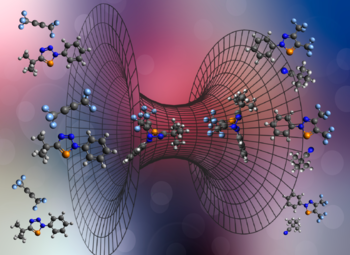A new access to diazaphospholes via cycloaddition–cycloreversion reactions on triazaphospholes
News vom 15.06.2022
In einer neuen Publikation erschienen in Chemical Communications berichten wir über die Bildung eines bis-CF3-substituierten Diazaphosphols, ausgehend von Hexafluor-2-butin und einem 3H-1,2,3,4-Triazaphospholderivat. Das Diazaphosphol bildet sich in einer [4+2]-Cycloadditionsreaktion, gefolgt von einer Cycloreversionsreaktion und der Eliminierung von Pivaloylnitril. Die anschließende Darstellung eines neuartigen W(CO)5-Komplexes mit einer W-P-Koordination zeigte, dass die Verbindung stärkere π-akzeptierende Eigenschaften hat als das entsprechende 3H-1,2,3,4-Triazaphosphol.
(DOI: https://doi.org/10.1039/D2CC02269A)
In a recent publication published in Chemical Communications, we report the formation of a bis-CF3-substituted diazaphosphole starting from hexafluoro-2-butyne and a 3H-1,2,3,4-triazaphosphole derivative. The diazaphosphole forms in a [4+2]-cycloaddition reaction followed by a cycloreversion reaction and elimination of pivaloylnitrile. Subsequent formation of a novel W(CO)5 complex with W-P coordination showed that the compound has stronger π-accepting properties than the corresponding 3H-1,2,3,4-triazaphosphole.

